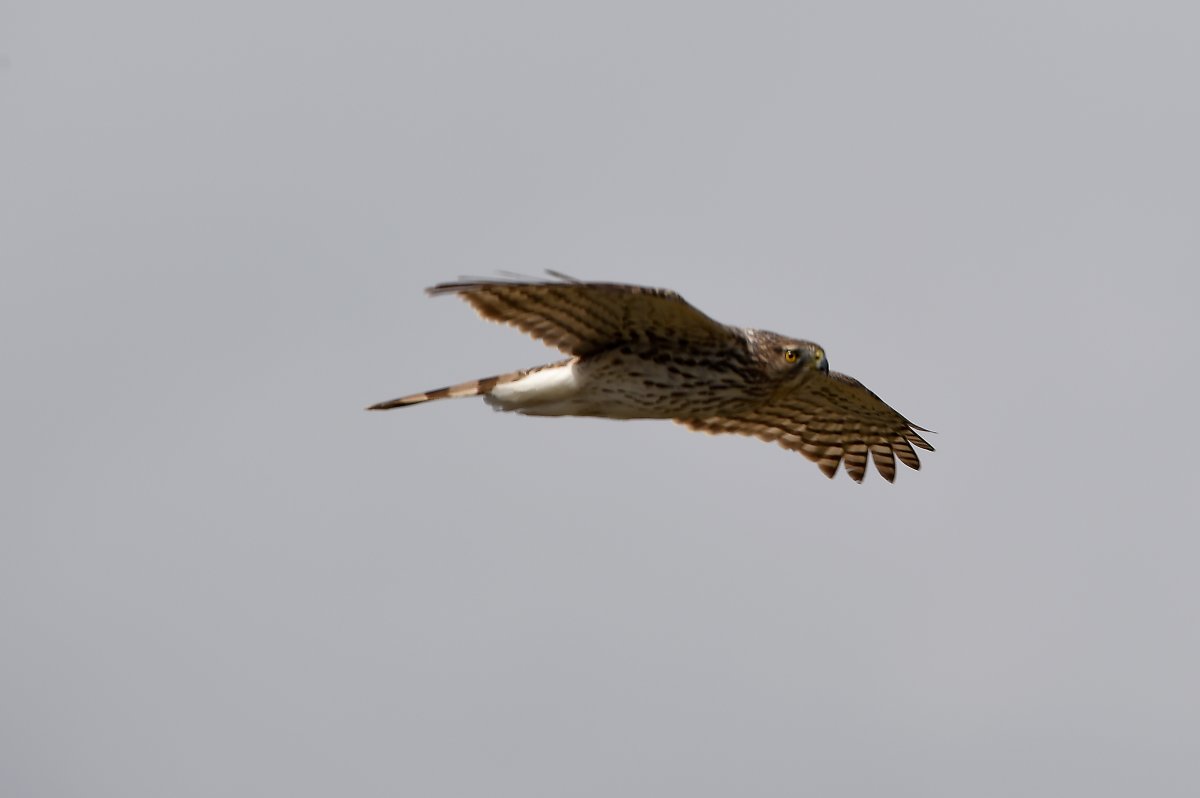A kettle of hawks that’s been terrorizing a Transcona neighbourhood for years is back and the birds are angrier than ever, according to a woman who says both she and her mother have fallen victim to the territorial birds.

Krista Gerbrandt said the family of Cooper’s hawks took over a crow’s nest in a tree on Ravelston Avenue East near Leola Street in May and they’ve have been getting increasingly aggressive ever since.
What started with “warning swoops” has progressed to the birds now dive-bombing anyone who walks under their nest, Gerbrandt says, and they’ve even started attacking pets and small animals.
“Neighbours were saying they would swoop down and take hats off people’s heads,” she said.
“They will take rabbits, small cats and small dogs and things like that if you’re not careful, so it’s not uncommon to see some rabbit carcasses laying around.”

Gerbrandt had her first run-in with the hawks a few weeks ago, when she says one flew into the back of her head while she was out for a walk.
But she says the attack on her 64-year-old mother two weekends ago was the last straw.
“Out of nowhere, bam, right in the back of the head … she had scrapes and scratches all over her face, her head was bleeding — inches away from her eye,” said Gerbrandt.
“If it had been any closer to her eye, there would have been some serious damage for sure.
“It shook her up, and rightfully so.”
Gerbrandt says this is the third or fourth year the hawks have nested in the area, but it’s the first time they’ve landed on her street. She says there’s two adult birds and at least three babies in the nest.
Things got so bad last year Gerbrandt says parents in the area started sending their kids to nearby Wayoata Elementary School wearing helmets.
“I’m just thankful that there hasn’t been school these past few months because those kids would have gotten it for sure,” she said.
“This happens every year and nothing gets done.”
Pack an umbrella?
Gerbrandt says she’s tried contacting Manitoba Conservation and her local MLA, but so far, no one has offered a solution.
A spokesperson from Manitoba Agriculture and Resource Development said there’s not much conservation officers can do — legislation protecting the animals prevents their removal, as well as the removal of their nestlings and nests.
“The province is aware of the incident and has investigated, however the conservation officers did not locate the birds,” reads a statement from the province.
“Staff are consulting with other avian experts to see if additional action or preventative measures can be taken.”
The provincial spokesperson said the hawks’ will typically get less aggressive after a couple of weeks, as their young get old enough to leave the nest.
In the meantime, he said those living near the nest should be watchful, travel in groups when possible, and be ready to swing their arms and hats at the hawks should they attack.
Those who are overly concerned can also “carry and deploy an umbrella” for protection, he added.

The response doesn’t fly with Gerbrandt, who says she’ll keep fighting so the people of Transcona no longer need to fear the sound of flapping wings every spring.
“It’s a matter of safety — they need to be relocated — and there needs to be provisions made for next year because we know it’s an annual problem,” she said.
“The message that I’m receiving is that the lives of these birds are more important than the safety and well-being of the citizens on this street.”





Comments